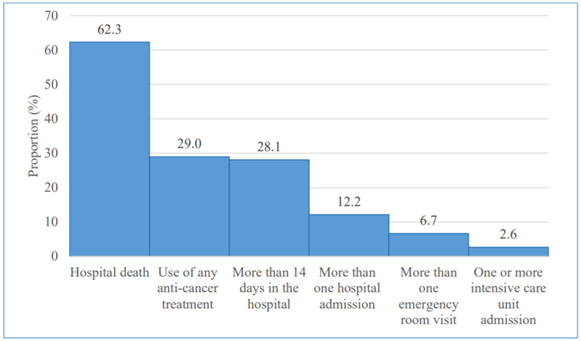There is concern that patients with life limiting illnesses too often receive high-cost, cost-ineffective care that is largely futile or even harmful, resulting in reduced quality of care.
1,2 The Cost of Medical Care of Patients with Advanced Serious Illness in Singapore (COMPASS) cohort study sheds light on these issues. COMPASS is a prospective, longitudinal study of 600 advanced cancer patients in Singapore.
The study was designed to capture patients’ healthcare utilization, associated costs, perceptions of the quality of care, and quality of life via surveys collected every four months until death. Patients’ medical and billing data were obtained from the two main speciality hospitals in the country: Singapore General Hospital and National University Hospital Singapore. The former includes data from the National Cancer Centre Singapore, the largest outpatient cancer centre in Singapore.
Using the medical and billing records of deceased COMPASS participants, our results reveal that advanced cancer patients in Singapore incurred hospital costs of $61,680 (in 2019 Singapore dollars), on average, during their last year of life and $8,350, on average, during their last month of life.3 In comparison, these costs are higher than end-of-life costs among advanced cancer patients in Japan, France, and the Netherlands,4-6 but lower than those in the US, where costs tend to be higher due to generous public insurance coverage for elderly Americans.7-10
Part of the reason for the high costs among deceased COMPASS participants is that roughly two thirds received aggressive care—defined as an in-hospital death or any of the following during their last month of life: use of an anti-cancer treatment (chemotherapy, radiotherapy, hormonal or targeted treatment), more than 14 days in the hospital, multiple ED visits or hospital admissions, or at least one intensive care unit admission.11 A breakdown of each aggressive care indicator is provided in Figure 1.

Figure 1. Indicators of aggressive care during last month of life (N=345)
How do COMPASS patients compare on these indicators to advanced cancer patients in other industrialized countries? The picture is mixed:
- Sixty-two percent of deceased COMPASS patients died in the hospital.11 Estimates from Canada, the UK, Taiwan, and even the US where hospice is readily available and reimbursable by Medicare are 50 percent or less.12-17 In France, the comparable estimate is 66 percent.5
- Twelve percent of deceased COMPASS patients had more than one hospital admission during their last month of life.11 Roughly comparable estimates in the US, Canada, and Taiwan range from 10 to 23 percent.16-20
- Just under 3 percent of deceased COMPASS patients had one or more intensive care unit admissions during their last month of life.11 Roughly comparable estimates are 2 percent in Canada,16 17 percent in France,5 17-19 percent in Taiwan,17, 18 and 13-21 percent in the US.13, 19-21
In short, deceased COMPASS patients were more likely to die in a hospital than advanced cancer patients in most other developed countries but were less likely to have multiple hospitalizations and were much less likely to be admitted to an intensive care unit during their last month of life.